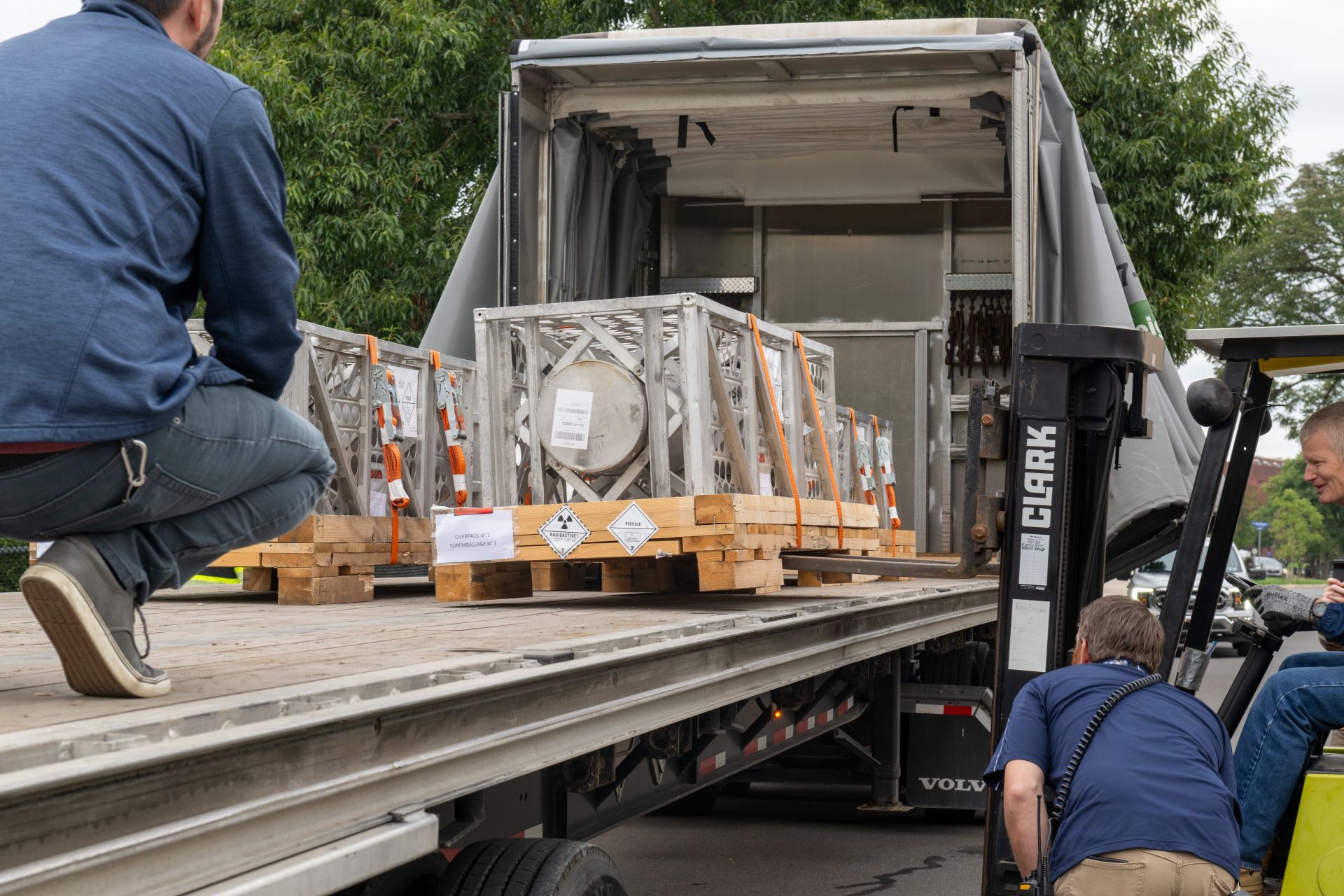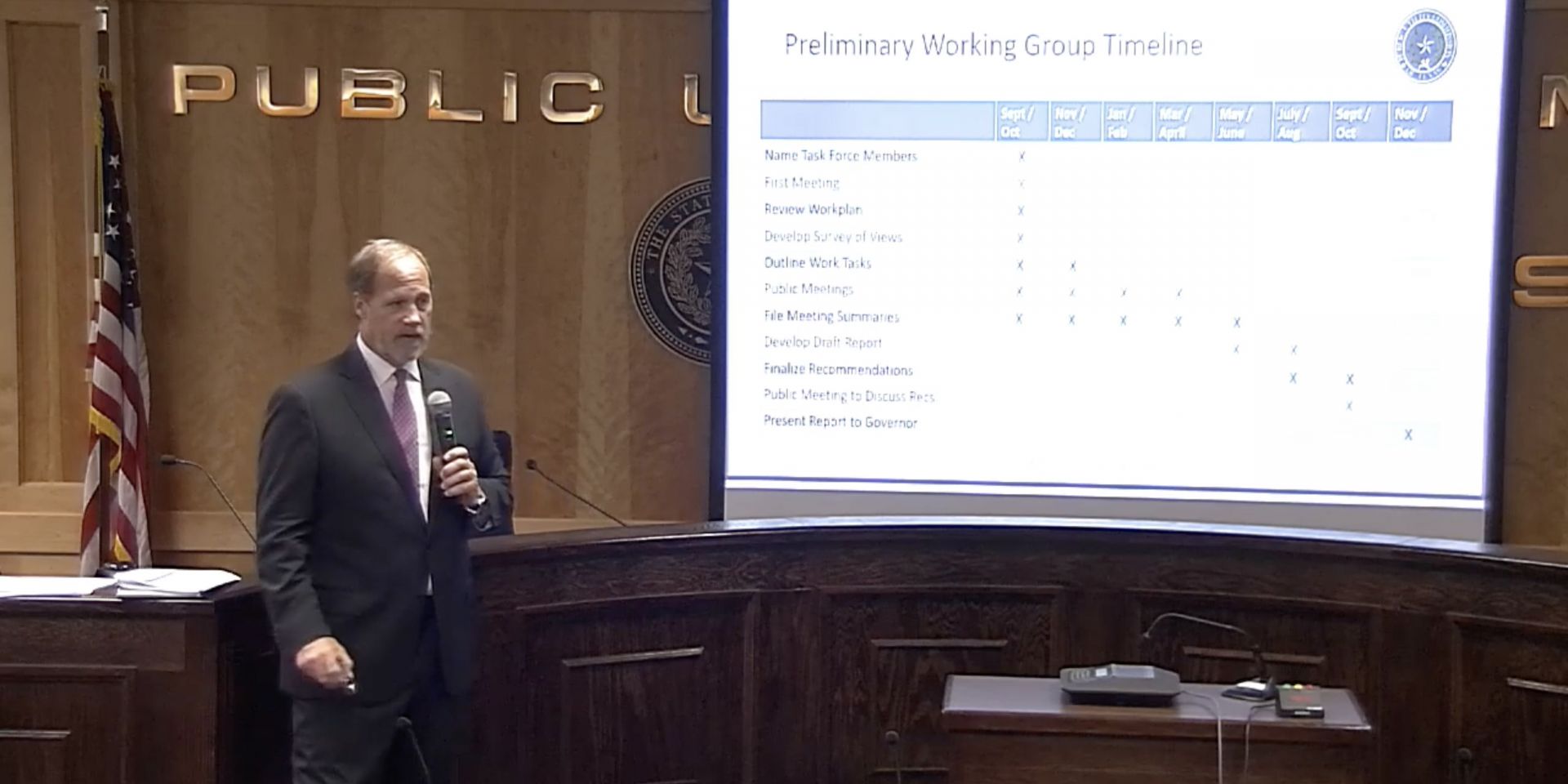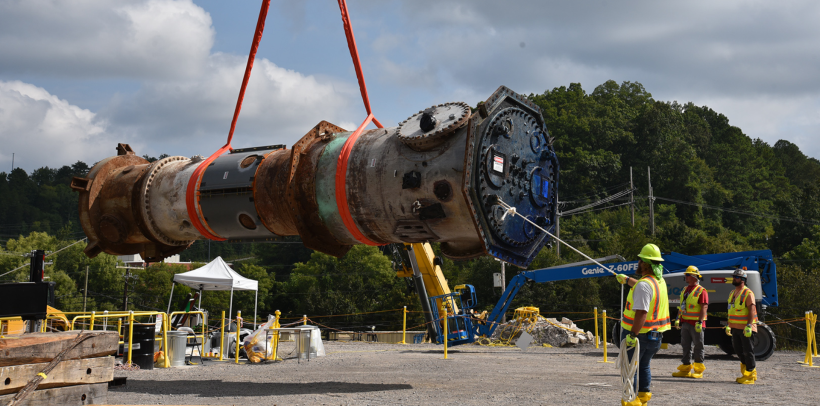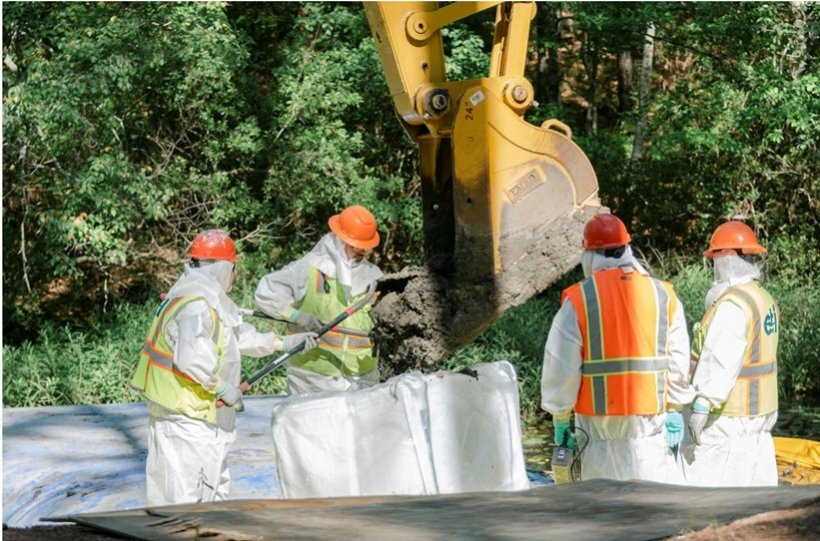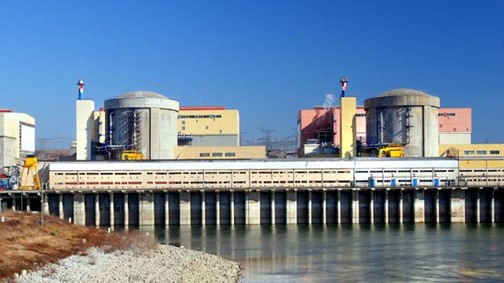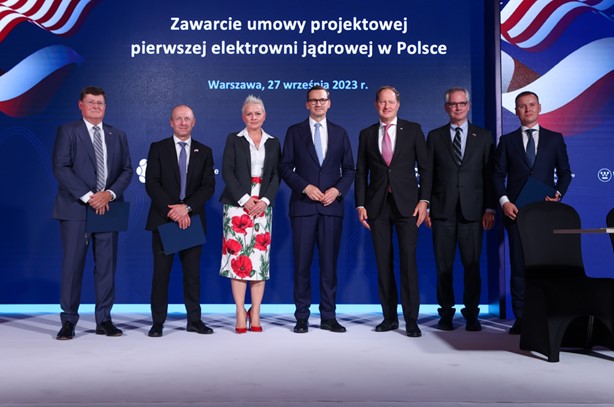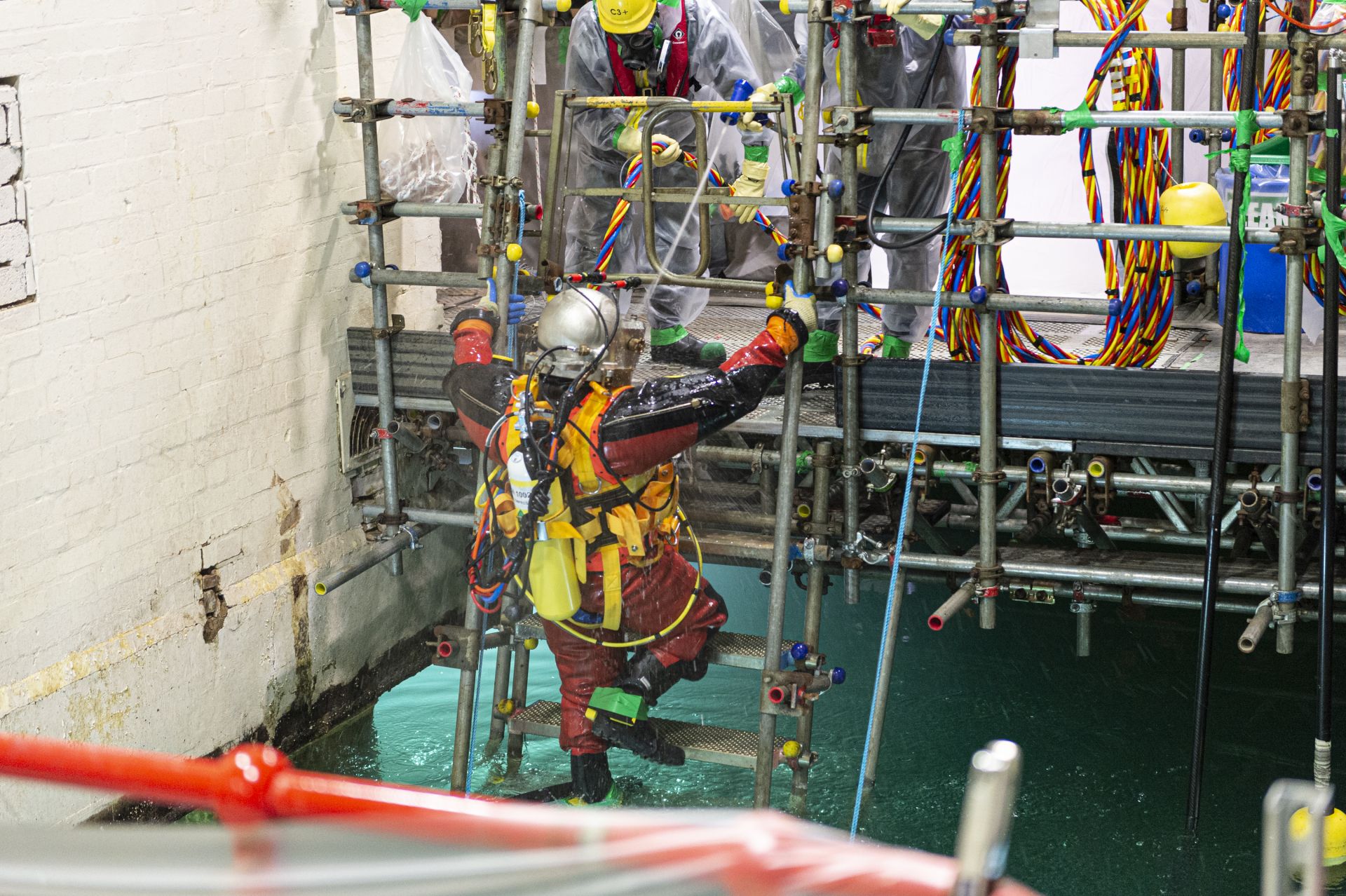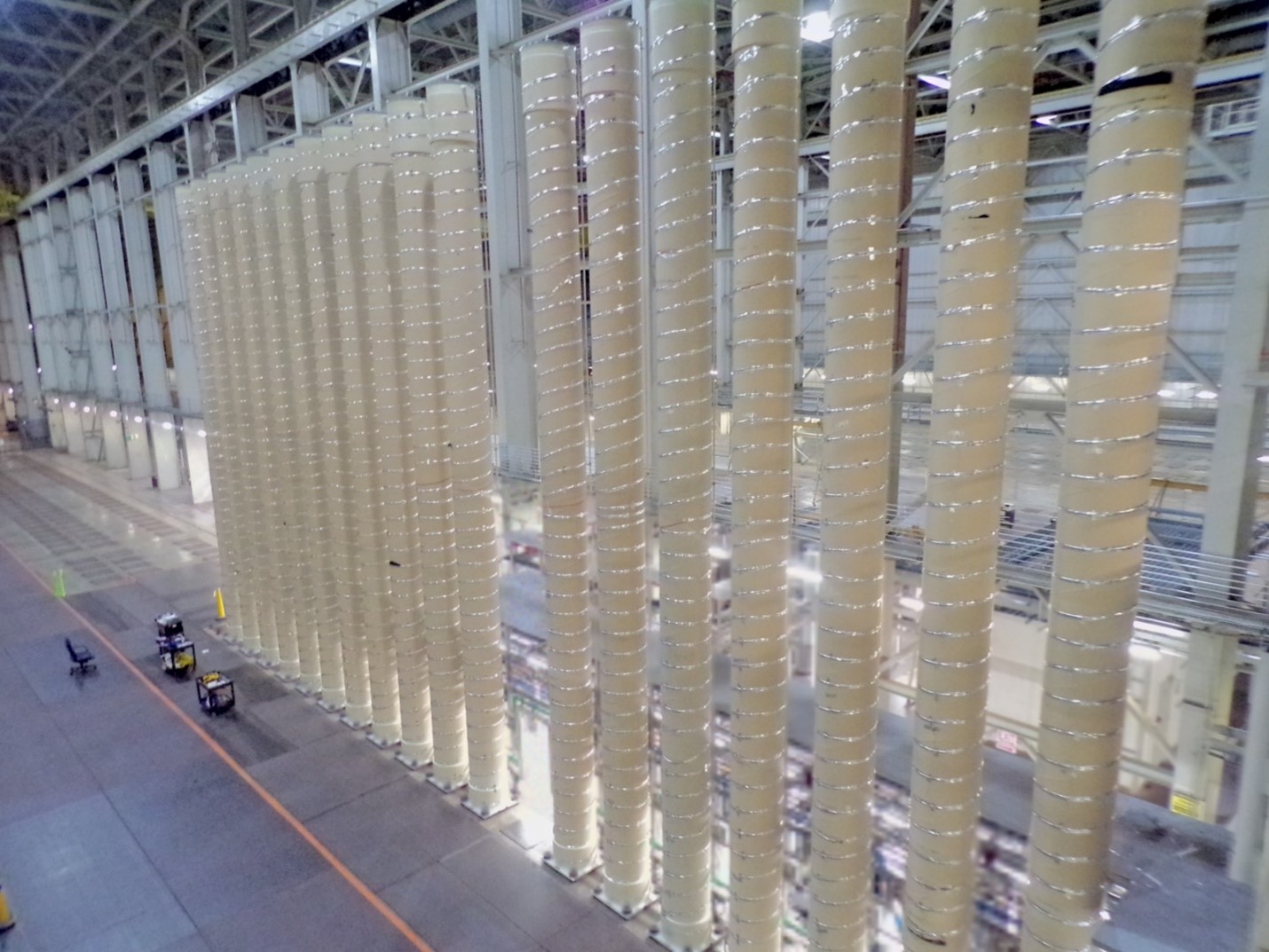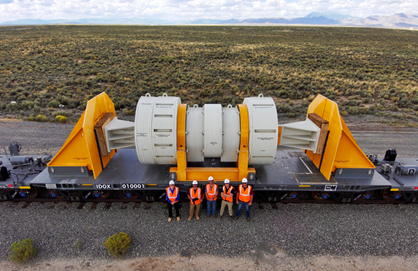ANS Executive Director/CEO Craig Piercy presented a certificate commemorating Sarram’s 60 years as an ANS member.
The American Nuclear Society is pleased to celebrate Mehdi Sarram on the 60th anniversary of his membership. He joined the Society in 1963 when he was an undergraduate in nuclear engineering at the University of Michigan and has since served the nuclear energy industry as a nuclear engineer, reactor operator, professor, and mentor. Over the years, Sarram has been active in several local ANS sections and has made remarkable contributions to the peaceful uses of nuclear energy, including bringing Iran’s first nuclear reactor to full power.
The TRIGA shipment was received September 27. (Photo: Kate Myers/Penn State)
Penn State’s Radiation Science and Engineering Center (RSEC) has received the first new TRIGA fuel shipped to the United States since 2012, the university announced on September 28. The fuel reached University Park, Pa., on September 27 and is destined for RSEC’s Breazeale Reactor, the nation’s longest continuously operating university research reactor.
PUCT commissioner Jimmy Glotfelty leads the discussion at the Texas Advanced Nuclear Reactor Working Group’s first public meeting, on September 28. (Image: PUCT)
The Texas Advanced Nuclear Reactor Working Group—formed recently by the Public Utility Commission of Texas (PUCT) at the direction of Gov. Greg Abbott—hosted its first public meeting last Thursday to discuss the group’s organizational structure and outline a plan to turn Texas into a national leader in the use of advanced nuclear energy.
The Low Intensity Test Reactor structure is lifted from its housing and placed in a specialized carbon metal container for shipment for disposal. (Photo: DOE)
The Department of Energy’s Office of Environmental Management announced it has completed a second of its 2023 priorities at Oak Ridge in as many months with the demolition of the Low Intensity Test Reactor, known as Building 3005, at the Tennessee site.
Watch a video of Building 3005 and its decommissioning here.
Workers remove contaminated sediment from the SRS in South Carolina. A $19 million DOE grant will support state monitoring of the site. (Photo: DOE)
The Department of Energy’s Office of Environmental Management has awarded nearly $54 million in noncompetitive financial assistance grants and cooperative agreements to help support the office’s cleanup program. DOE-EM is responsible for environmental legacy cleanup of the effects of decades of nuclear weapons development and government-sponsored nuclear energy research.
Comic books and cartoon characters began to be used to provide information and propaganda about nuclear weapons and energy in the 1940s. Items in the exhibition include True Comics #47 (1946), Bert the Turtle Says Duck and Cover (1951), The Mighty Atom, Starring Reddy Kilowatt (1959), and The H-Bomb and You (1955). (Photo: National Museum of Nuclear Science and History)
For many of us, the toys of our childhood leave indelible marks on our consciousness, affecting our long-term perceptions and attitudes about certain things. Hot Wheels may inspire a lifelong fascination with fast, flashy automobiles, while Barbies might shape ideas about beauty and self-image. For the generation who grew up during the Atomic Age—the post–World War II era from roughly the mid-1940s to the early 1960s—the toys, games, and entertainment of their childhoods might have included things like atomic pistols, atomic trains, rings with tiny amounts of radioactive elements, and comic books, puzzles, and music about nuclear weapons.
Romania’s Cernavoda Units 1 and 2. (Photo: Nuclearelectrica)
Canada will provide C$3 billion (about $2.2 billion) in export financing to Romania’s nuclear operator, Nuclearelectrica, in support of Canadian participation in the project to complete Units 3 and 4 at the Cernavoda nuclear plant, Canadian minister of energy Jonathan Wilkinson announced last week.
At the September 27 signing ceremony for the engineering services contract to build Poland’s first nuclear power plant are, from left, John Howanitz, president of Bechtel’s nuclear, security, and environmental global business unit; Westinghouse president and CEO Patrick Fragman; Polish government plenipotentiary for strategic energy infrastructure Anna Łukaszewska-Trzeciakowska; Polish prime minister Mateusz Morawiecki; U.S. ambassador to Poland Mark Brzezinski; assistant secretary of energy for international affairs Andrew Light; and Polskie Elektrownie Jądrowe president Mateusz Berger. (Photo: Bechtel)
Just one week after inking a consortium agreement to partner on the design and construction of Poland’s first nuclear power plant, Westinghouse Electric Company and Bechtel joined state-owned Polish utility Polskie Elektrownie Jądrowe (PEJ) in Warsaw on Wednesday for the signing of the project’s engineering services contract.
Josh Everett, a diver with UCC UK Ltd., enters bay No. 11 of Sellafield’s Pile Fuel Storage Pond in December 2022, the first time in over 60 years a diver has entered the legacy pond, used to store a variety of spent nuclear fuel types and wastes. During this commissioning nuclear dive, Everett’s underwater tasks included emergency diver extraction trial confirmation, radiation monitoring system verification, and radiation contact meter commissioning. (Photos courtesy of Sellafield Ltd.)
The last time a human entered the Pile Fuel Storage Pond at the Sellafield nuclear site in Cumbria, England, was in 1958, when records show a maintenance operator and health physics monitor carried out a dive into the newly constructed pond to repair a broken winch. At least that was true until December 2022, when Josh Everett, a diver from the U.K. specialist nuclear diving team Underwater Construction Corporation (UCC) UK Ltd., became the first person in more than 60 years to work in one of the most unique workplaces in the world.
Upper-level view of Centrus’s HALEU cascade. (Photo: Centrus Energy)
The Nuclear Regulatory Commission is requesting comments on the regulatory basis for a proposed rule for light water reactor fuel designs featuring high-assay low-enriched uranium (HALEU), including accident tolerant fuel (ATF) designs, and on draft guidance for the environmental evaluation of ATFs containing uranium enriched up to 8 percent U-235. Some of the HALEU feedstock for those LWR fuels and for advanced reactor fuels could be produced within the first Category II fuel facility licensed by the NRC—Centrus Energy’s American Centrifuge Plant in Piketon, Ohio. On September 21, the NRC approved the start of enrichment operations in the plant’s modest 16-machine HALEU demonstration cascade.
The Atlas railcar carries a test load simulating a shipment of spent nuclear fuel. (Photo: DOE)
The Department of Energy’s Office of Nuclear Energy has wrapped up testing of its Atlas railcar, successfully completing a round-trip journey from Pueblo, Colo., to Scoville, Idaho. Built to safety standards set by the Association of American Railroads (AAR), the 12-axle railcar is designed to transport large containers of spent nuclear fuel and high-level radioactive waste.



